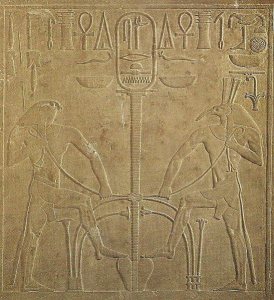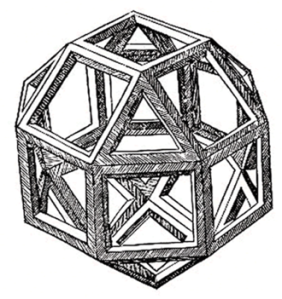Egypt, located around the Nile, is one of the earliest developed culture areas in the world, and established a unified country near 3200 BC. The great characteristic of the Nile is the regularity of its floods. The periodic floods would inundate the whole land, which had to be re-measured when the waters receded. Egyptian mathematics developed to make accurate measurements for the division of land. In addition, mathematics also played an important role in prediction and preparation of flood events.
Our main awareness of Egyptian mathematics is based on two papyri, named the Moscow Mathematical Papyrus and the Rhind Mathematical Papyrus, which are preserved in Moscow and London respectively. Why were so few documents from ancient Egypt preserved? It’s because any kind of paper doesn’t last as long as stone, clay, or some other materials. The Egyptian utilized a kind of grass as “paper”, named papyrus, which looks like reeds and grows broadly around Nile Delta. However, this paper made of grass would easily dry and crack, and the records on it were really hard to preserve. Instead, some records on stone, clay, and other materials were preserved well. A Frenchman, whose name is Bastien, spent a very long time studying this information, and he finally figured out the meaning of the words on papyrus. His findings help us to understand some applications of the old mathematics on managing civil and religious matters. Specifically, the mathematics can be used in the division of land and wages, and the calculation of amounts of bricks required to build a building. In summary, the realistic problems motivated ancient Egyptians to master arithmetic operations, a fraction method and so on. We can see the ancient Egyptians had a gift in mathematics.
Fractions played an important role in ancient Egyptian mathematics. When an Egyptian conducted a fraction calculation, they only used as numerator. One of the famous examples in Egyptian fraction is how to divide bread. When ancient Egyptians divided nine loaves between ten people, instead of saying that each person should get 9/10 of a loaf, they would say each person should get 1/2+1/4+1/5+1/12+1/30 of a loaf. So why do they express fractions like that? According to Wikipedia, “An Egyptian fraction is the sum of distinct unit fractions, such as 1/2+1/3+1/16. That is, each fraction in the expression has a numerator equal to 1 and a denominator that is a positive integer, and all the denominators differ from each other. The value of an expression of this type is a positive rational number a/b; for instance the Egyptian fraction above sums to 43/48.[2]” We can see another bread example of how to divide only two loaves between three people. Firstly, they would divide two loaves to four halves, and each person would get half, the remaining 1/2 would be divided into three equal parts, and those three parts are divided between the three people. In the end, each person would get 1/2 plus 1/3 of 1/2, which sum is 2/3. Thus I think that they express fraction like this way because it was easy to understand for them. The Rhind Mathematical Papyrus also recorded some information about this method[3].
The origin of Egyptian mathematics was not as theory. Instead, the mathematics was applied to real life and to solve realistic problems. The beginning of mathematics was just a method to solve problems instead of a subject. Ancient Egyptian used mathematical methods to pay the workers, and found a way to pay them evenly. As time went by, people used this method and to improved this method. Thus, Egyptians studied mathematics and opened up a road for further development of mathematics. The ancient Egyptians not only invented the fraction, but also found other stuff. For example, the method of calculating area of a circle, their own calendar and so on. Those achievements brought great change and convenience for future life.
Reference:
[1]http://en.wikipedia.org/wiki/Ancient_Egyptian_mathematics
[2]http://en.wikipedia.org/wiki/Egyptian_fraction
[3]Clagett, Marshall Ancient Egyptian Science, A Source Book. Volume Three: Ancient Egyptian Mathematics (Memoirs of the American Philosophical Society) American Philosophical Society. 1999 ISBN 978-0-87169-232-0















